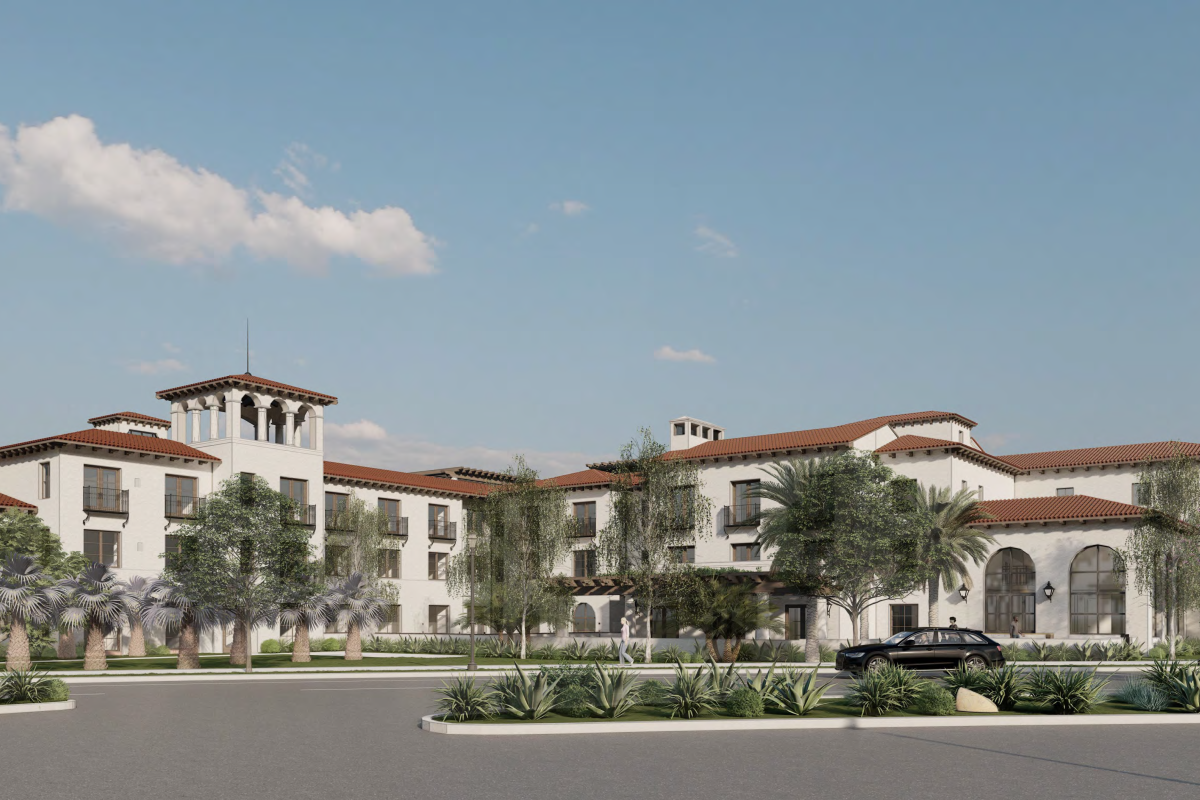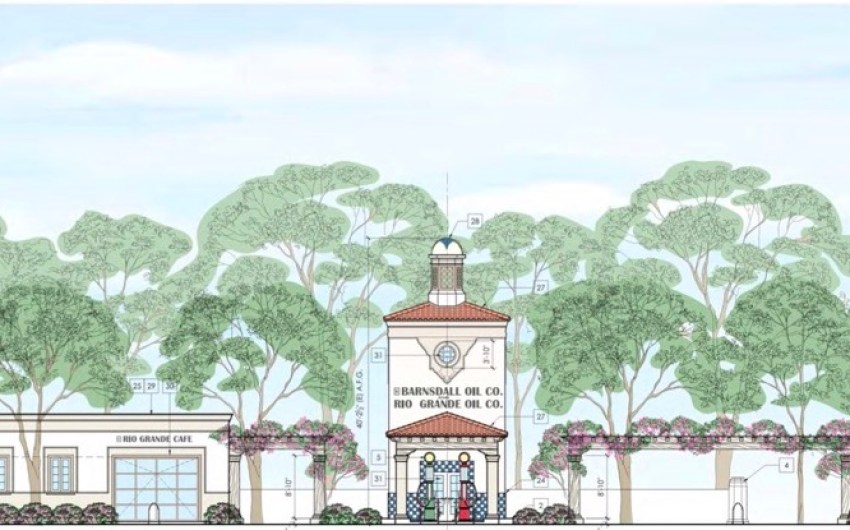Big Showdown Looming for Developers of 250-Room Garden Street Hotel
Project Dating Back More than 20 Years Looks to Move Forward on February 29 Despite Public Pushback

Back in 1983, the City of Santa Barbara struck a deal with Bill Wright, the owner of several parcels that stretched along Garden Street between Highway 101 and the railroad tracks. According to the “Specific Plan” — which was signed by former city mayor Sheila Lodge (who now sits on the city’s Planning Commission) — Wright would allow the city to carve an extension through his property connecting Garden Street to Cabrillo as long as he could have the option to realize his vision for a 250-room beachfront hotel, a 450,000-foot public market, and an aquarium.
While the public market and aquarium ideas never came to fruition, the Wright family resurrected the plans for the 250-room hotel in 2019, enlisting the help of Shaun Gilbert from the Newport Harbor–based Dauntless Development to help guide the project through the city review process.
But the project developers behind the Garden Street Hotel have struggled to win over the review boards and the public as recent concerns over housing impacts have forced the city to question the need for more hotels. Still, the developers contend that the city must hold up its end of the two-decade-old deal, and on Thursday, February 29, the project will come across the Planning Commission for a third time since April 2023 as developers seek approval to move forward with the plans as they are: a 250-room Spanish Colonial–style hotel with six units of affordable housing.
When the project previously came across the city’s Planning Commission in April 2023, former chair Roxana Bonderson and commissioner Devon Wardlow questioned whether the project would truly benefit the community beyond the tourism tax dollars.
“I see it as a tourist-exclusive benefit,” Bonderson told the developers. “It’s not even open to the locals to step foot on the premises to enjoy a meal.”
There were also questions as to why the developers had not addressed the commission’s concerns that the city was in need of housing instead of hotels.
Gilbert, who spoke on behalf of Dauntless Development, said in April that the developers would be “open” to changes, though he warned that if the city were to force housing into the project, nothing would be built at the location.
“Not everyone’s going to get what they want,” Gilbert said.
The project was kicked down the road to August, with Wardlow asking that the applicant consider a housing analysis, donate to a local housing fund, or at least include employee housing in the project.
In August, the developers brought back the project with the same amount of hotel rooms, but with the new addition of six affordable housing units in hopes that it would offset the housing impact. Instead, it drew the ire of the public and several commissioners who wondered how the developers had landed on a total of six units of housing.
Again, Commissioner Wardlow criticized the project, saying that the developers hadn’t explained their methodology for arriving at the six units, which she said was “inadequate for the community as we continue to tackle our housing crisis.”
A frustrated Gilbert responded by saying that the city was asking too much by forcing the developers to spend hundreds of thousands toward a project that might not happen. Anything more than six units, he said, would kill the project for investors.
“This is not an affordable housing development,” Gilbert said. “We are not going to solve all of the city’s problems with one project, right? We’re not going to make everyone happy.”
The commission kicked the can down the road once more, asking that the project’s developers come back with a more in-depth explanation as to how they had arrived at six affordable units. The commission also asked that they provide documentation proving that they had done sufficient public outreach.
On Thursday, the project will return to the Planning Commission again for a project review, which will include an explanation of the math that went into the housing impact study.
According to the staff report released prior to the hearing, the housing analysis determined that the hotel would employ about 60 people. Then, by assuming that one percent of workers would be too young to start a household and that there are 1.66 workers per household, the analysis found that an estimated 36 workers would need housing. Then, by assuming that only 30.7 percent of service-based workers in Santa Barbara actually live in the city, the developers arrived at the conclusion that the project would generate the need for 11 new housing units.
But, the developers argue, since the city does not have a “commercial linkage fee” — in which the developers pay a dollar amount instead of building units to offset housing demand — and, since these fees are often 20-50 percent of the estimated housing demand, the project would more than adequately meet the housing demand with six units.
While the developer’s math is not exactly easy to follow, the housing impact analysis itself may be all that is needed, according to the language set forth in the Specific Plan back in 1983. According to the staff report, the agreement states that “the study shall develop strategies and programs to minimize any potential adverse impacts consistent with city policy at the time of development plan review.” It does not, however, explicitly state that the project must completely mitigate housing impacts.
Also making the commission’s decision much more difficult is the fact that the city has no policies that prevent development of hotels in regard to the housing crisis. There is no moratorium on hotels in place — an urgency ordinance that would have temporarily banned new hotels was rejected by the City Council in June 2022 — and a previous policy that gave review boards power to deny projects that have “significant unmitigated adverse impact” on the local housing stock was removed in 2013 as part of the city’s Growth Management Program Ordinance.
Despite the questions over methodology and the concerns over housing impacts, the city’s planning department is still recommending that the Planning Commission approve the project, as it meets all objective standards according to current city policy.
“Staff finds that, in the absence of specific local policies to address impacts to the city’s housing stock from new nonresidential development, and based on the submitted housing impact memorandum, the provision of six affordable rental units on-site is appropriate to minimize adverse impacts to housing,” the staff report reads. “Therefore, staff recommends that the Planning Commission approve the project.”
Thursday’s hearing will also be the first time the Planning Commission will review the project with a new roster — without chair Bonderson and with the addition of new commissioner Brian Barnwell. There will likely be thorough discussion, along with plenty of public comment from concerned residents, including representatives of Keep the Funk S.B., a nonprofit started in 2022 to oppose the large-scale development in the Funk Zone neighborhood.
“The hotel would uproot dozens of local businesses and local artists that have been on the site for decades,” the group wrote on its Instagram page prior to the February 29 hearing. “The Funk Zone is not in any way, shape, or form the neighborhood that it used to be in 1983. And it certainly doesn’t need another hotel.”
Premier Events
Sun, Apr 28
6:00 PM
Santa Barbara
AHA! Presents: Sing It Out!
Thu, May 02
5:00 PM
Santa Barbara
Things with Wings at Art & Soul
Sat, May 04
10:00 AM
Lompoc
RocketTown Comic Con 2024
Sun, Apr 28
11:00 AM
Santa Barbara
Santa Barbara Earth Day Festival 2024
Wed, May 01
7:30 PM
Santa Barbara
American Theatre Guild Presents “Come From Away”
Thu, May 02
5:00 PM
Santa Barbara
100th Birthday Tribute for James Galanos
Thu, May 02
5:00 PM
Santa Barbara
Meet the Creator of The Caregiver Oracle Deck
Fri, May 03
4:00 PM
Santa Barbara
Santa Barbara Fair+Expo “Double Thrill Double Fun”
Fri, May 03
8:00 PM
Santa barbara
Performance by Marca MP
Sat, May 04
10:00 AM
Solvang
Touch A Truck
Sat, May 04
11:00 AM
Santa Barbara
Mental Wellness Center’s 28th Annual Arts Faire
Sat, May 04
11:00 AM
Santa Barbara
Community History Day
Sat, May 04
3:00 PM
Solvang
The SYV Chorale Presents Disney Magic Concert
Sun, Apr 28 6:00 PM
Santa Barbara
AHA! Presents: Sing It Out!
Thu, May 02 5:00 PM
Santa Barbara
Things with Wings at Art & Soul
Sat, May 04 10:00 AM
Lompoc
RocketTown Comic Con 2024
Sun, Apr 28 11:00 AM
Santa Barbara
Santa Barbara Earth Day Festival 2024
Wed, May 01 7:30 PM
Santa Barbara
American Theatre Guild Presents “Come From Away”
Thu, May 02 5:00 PM
Santa Barbara
100th Birthday Tribute for James Galanos
Thu, May 02 5:00 PM
Santa Barbara
Meet the Creator of The Caregiver Oracle Deck
Fri, May 03 4:00 PM
Santa Barbara
Santa Barbara Fair+Expo “Double Thrill Double Fun”
Fri, May 03 8:00 PM
Santa barbara
Performance by Marca MP
Sat, May 04 10:00 AM
Solvang
Touch A Truck
Sat, May 04 11:00 AM
Santa Barbara
Mental Wellness Center’s 28th Annual Arts Faire
Sat, May 04 11:00 AM
Santa Barbara
Community History Day
Sat, May 04 3:00 PM
Solvang
























